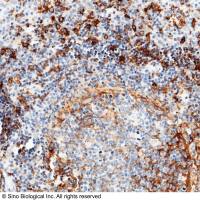14Seed Mutagenesis of Arabidopsis
互联网
496
The generation of mutations is the most basic element of genetic analysis. Mutagenesis is the process by which heritable alterattons in the genome of an organism, mutations, are produced. In order to conduct genetic analysis, at least two alleles for a given locus must exist and the facile production of these alleles through mutagenesis has been the focus of considerable research since the early part of this century Today, the common mutagens available to geneticists fall mto three general classes: chemical, physical, and biological, and the use of these in Arubidopszs has been reviewed recently (1 , 2 ). The use of introduced T‐DNA and heterologous transposons such as Ac/Ds and sup- pressor mutator (SPM) as biological mutagens are treated in detail m subse- quent chapters. The focus of this chapter is on the production of mutations in Arabidopsis seed with chemical mutagens. In seed mutagenesis the mdividuals actually treated with the mutagen are referred to as the M1 generation. The progeny derived from the self-fertilization of these individuals are referred to as the M2 generation. The M2 generation is the first generation following mutagenesis in which homozygous recessive mutations can be detected, and for this reason, it is the generation most frequently used in screening for mutants.



![///蛋白Recombinant Glycine max 2S seed storage albumin protein重组蛋白2S albumin; GM2S-1; Napin-type 2S albumin 3) [Cleaved into: 2S albumin small chain; Aspartic acid-rich peptide; Lunasin); 2S albumin large chain; 8 kDa methionine-rich protein; 8 kDa MRP)]蛋白](https://img1.dxycdn.com/p/s14/2024/0914/429/2534610676379384381.jpg!wh200)




